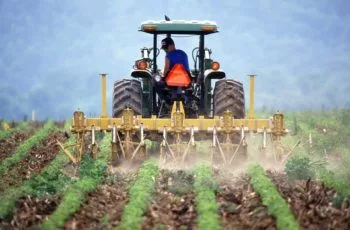
INDIANAPOLIS-According to a recent conservation survey, Indiana farmers have set a conservation record this year by planting an estimated 1.6 million acres of overwinter living covers.
“Protecting our most vital natural resources is top of mind for our Indiana farmers and this year’s record breaking cover crop acreage is a testament to that,” said Lt. Gov. Suzanne Crouch, Indiana’s Secretary of Agriculture and Rural Development. “Through the implementation of cover crops and other conservation efforts, farmers are ensuring our land and water resources remain healthy and productive.”
Overwintering living covers (i.e. – cover crops and small grains, like winter wheat) are known for their environmental benefits. Cover crops and small grains, planted in the fall after harvest, help increase organic matter in the soil and improve overall soil health by adding living roots to the soil for additional months of the year. Cover crops also improve water infiltration into the soil, while other covers, like legumes, serve as natural fertilizers.
Although the conservation transect does not differentiate between cover crops and small grains, Indiana farmers typically plant fewer than 200,000 acres of small grains annually, so cover crops vastly dominate the 1.6 million estimated acres. Apart from corn and soybeans, cover crops are planted on more acres than any other commodity crop in Indiana.
“Hoosier farmers have held strong at 1.5 million acres of cover crops planted since 2021, so we are excited our farmers were once again able to move the needle forward,” said Don Lamb, Indiana State Department of Agriculture Director. “Soil conservation successes would not be possible without the dedicated farmers and the Indiana Conservation Partnership to help them along the way.”
As a result of the cover crops planted, it is estimated that 1.7 million tons of sediment was prevented from entering Indiana’s waterways, which is enough sediment to fill more than 480 Olympic-size swimming pools. Overwintering covers also prevented 4.3 million pounds of nitrogen and over 2.2 million pounds of phosphorus from entering Indiana’s waterways.
The conservation survey also showed that about 68% of farmed acres were not tilled and 17% had employed reduced tillage after the 2022 harvest. This early spring survey is not intended to quantify pre-planting tillage.
“Conserving our natural resources is not a one-agency job. Indiana conservation succeeds through its partnerships, working closely with individual farmers and landowners, local, state and federal government agencies, private industries, nonprofits, and many other people and groups,” said Curtis Knueven, Acting State Conservationist for Indiana’s Natural Resources Conservation Service. “These partnerships share their unique areas of expertise and allow us to expand the reach and depth of conservation in Indiana.”
The Indiana Conservation Partnership conducts many programs that help encourage private landowners to adopt cover crops as part of their agricultural strategy. One such initiative that helped contribute to the successful year for cover crops in 2022 was the Cover Crop Premium Discount Program (CCPDP). It is a program that provides a discount on crop insurance for planting cover crops. CCPDP assisted landowners in planting about 30 thousand acres of cover crops in 2022.
The conservation transect is a visual survey of cropland in the state. It was conducted between March and May 2023 by members of the Indiana Conservation Partnership, including the USDA Natural Resources Conservation Service, the Indiana State Department of Agriculture, Indiana’s Soil and Water Conservation Districts and Purdue Extension, as well as Earth Team volunteers, to show a more complete story of the state’s conservation efforts.


